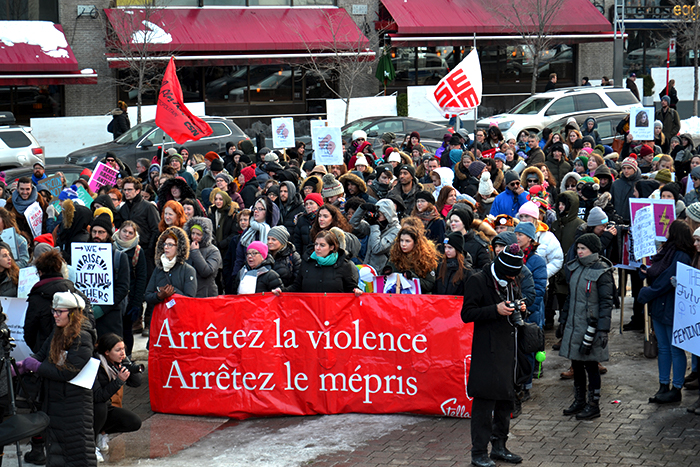On Saturday, Jan. 20, hundreds of Montrealers gathered at Place des Arts to march in support of women’s rights. While demonstrations of popular disapproval of U.S. President Donald Trump might give individuals worldwide some hope that human decency remains in society, they will not evict him from office. This is not to say that acts of resistance do not have their place in a healthy democratic society—the success of the 1960s civil rights movement was contingent on civil disobedience and protest. However, for change-seekers in Canada and the U.S. to realize their political goals, there must be equally exuberant efforts to bring about change through existing democratic institutions.
Joining a political party is the first step to do so. While imperfect, parties are the established vehicles in liberal democracies through which individuals who share a common vision can band together to shape state institutions. In electoral democracies, an individual is powerless to effect change alone; it takes a group effort, and not only once every year, but through continuous engagement and participation.
Yet, political participation in Canada has been in decline over the past 30 years. While voter turnout in the 2015 federal election reached a 20-year high of nearly 68.5 per cent, it failed to breach the 70 per cent benchmark that was common before 1990. Further, only about two per cent of Canadians are registered members of a political party.
There is one group in society most notably absent from electoral politics—young people. In both Canada and the U.S., turnout is significantly lower among voters aged 18 to 24 than the national averages. This is not for lack of interest in political issues, however. In a report published following the 2015 Canadian federal election, non-partisan advocacy group Samara Canada found that young voters engaged in political discussions as frequently as older demographics did. Voter turnout in the 2015 federal election reflected this. Young voters boasted the highest increase in turnout of any demographic. Nevertheless, young people are the most disconnected from political parties. Samara also found that while more than three-quarters of Canadians above the age of 30 were contacted by parties during the election, only half of young voters were.
Turning to political parties is imperative if young people are to shape the future of our nations. Parties offer individuals the opportunity to participate in and shape a broader movement, and realize common policy objectives. In Canada, Prime Ministerial candidates are chosen by parties’ membership, and party platforms are determined by members at conventions. For those who complain that elections present limited choices for voters, partisan politics offers the opportunity to have their voice heard. The options for the next Prime Minister presented during federal election campaigns are ultimately determined by the few who choose to engage in political parties.
The good news is that political parties in Canada are more accessible than ever. Canada’s three major parties all choose their current leaders by popular vote as opposed to a delegated convention, meaning that any Canadian can join a party and cast a ballot. The Liberal Party was the first to do this in 2013, and went so far as to allow non-members to cast a ballot, as long as they registered as a Liberal supporter. The party has since eliminated membership fees altogether, rebranding itself as representing an open and inclusive progressive movement.
By joining political parties, youth have the opportunity to exert unparalleled influence over government policy. Canada is home to one of the largest youth political groups in the world, the Young Liberals of Canada. Young Liberals are more than just young people within a larger party, they have their own organizational structure and considerable influence over policy. The Liberal Party’s policy on medically-assisted death was proposed by Young Liberals in Quebec. The New Democratic Party also offers young people space to have their voices heard in politics. In 2011, the party had a number of young candidates elected, four of whom were students at McGill at the time.
Political parties on campus are more than the average club—they offer students a real opportunity to shape our society. In the age of Trump, liberals are facing a considerable challenge. Nevertheless, as demonstrated by marches across the globe, activists are fighting for social progress. This energy must be harnessed and directed into our political parties to deliver lasting change. Now that the march is over, the real work begins.









